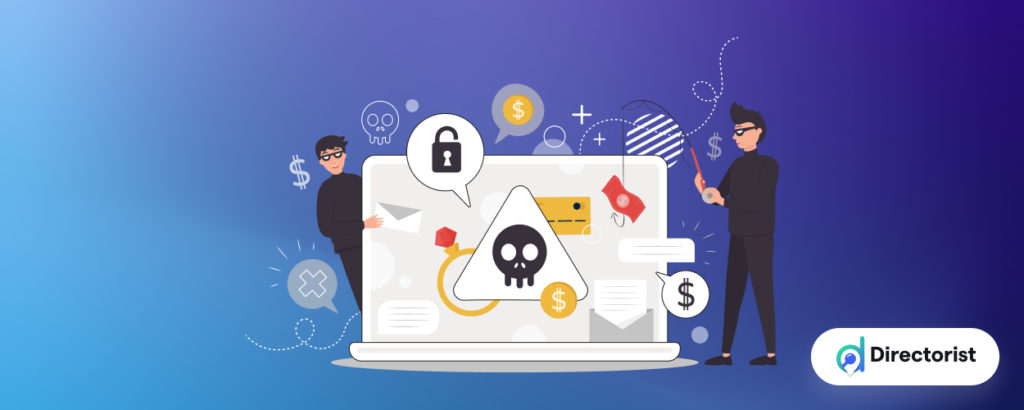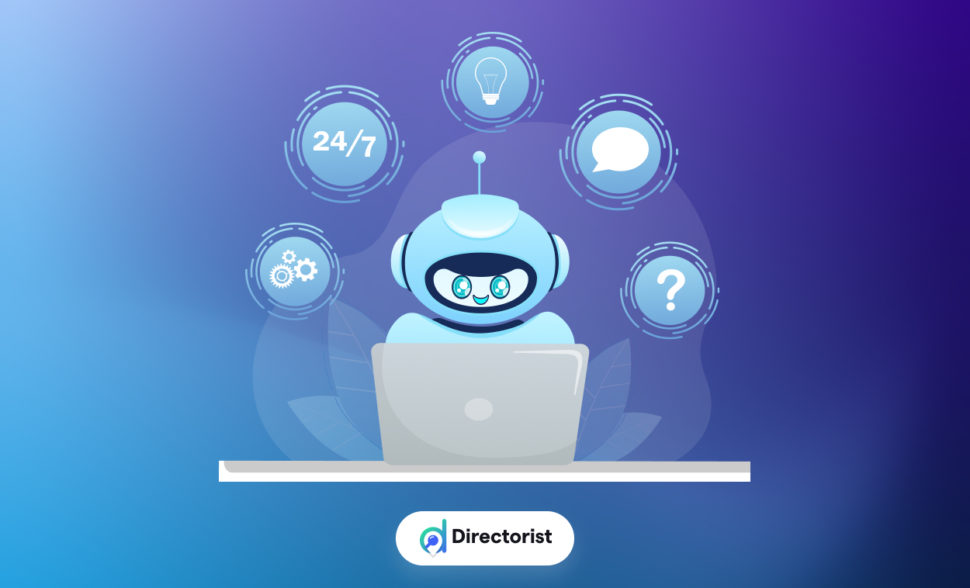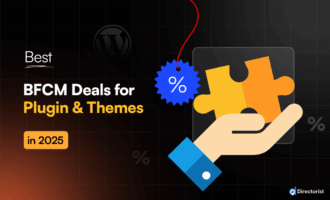Contents
- What Is a Bot?
- What is a Bot Attack?
- How Bots Can Affect The Classified Ad Industry?
- 5 Common Bot Threats for The Classified Ads Industry
- Why Do Bot Attacks Happen in Classified Ads Industry?
- How to Prevent Bot Threats in the Classified Ads Industry?
- Here Are Some Additional Tips
- What Is the Difference Between Bot Attacks and Botnet Attacks?
- What is the Difference Between a DoS Attack and Botnet Attack In Classified Ads Industry?
- How to Identify the Signs and Know If You Have a Bot Problem?
- Unusual traffic patterns
- High engagement rates with low conversion
- Fake or incomplete user profiles
- Repetitive content
- Unusual user behavior
- Rapid ad posting
- High flagging or reporting activity
- Unusual referral sources
- Unusual geo-distribution
- Unexplained spikes in account registrations
- Irregular interaction patterns
- How To Detect Bot Traffic in Web Analytics?
- How Do Bots Evade Detection?
- Frequently Asked Questions (FAQs)
- How do bots contribute to fraud and scams in classified ads?
- How do bots manipulate ad engagement metrics, and why is it harmful?
- What is the impact of bot-driven fake reviews on classified ad platforms?
- How do bots contribute to DoS attacks in the classified ads industry?
- Can bots be used to steal personal information from classified ad users?
- What role does machine learning play in combating bot threats?
- To Cap It All Off
Top 5 Bot Threats for The Classified Ads Industry
In the shadows of the internet, a new breed of predator stalks its prey. These are not flesh-and-blood hunters, but bots. Malicious bots are programmed to exploit vulnerabilities in classified ads websites, stealing personal information, inflating prices, and disrupting legitimate transactions.
The classified ads industry is one of the prime targets for bot attacks. These websites are often attractive to attackers because they:
- Handle sensitive personal information, such as names, addresses, and financial data
- Offer high-value items, such as cars, electronics, and jewelry
- Are often understaffed and have limited resources to combat bot attacks
In this article, we will walk you through the list of common bot threats for the classified ads industry and how to prevent them easily and effectively. So, without further ado, let’s get started.
What Is a Bot?

A “bot,” short for “robot” or “robotic,” is a term used to refer to a software application or script that performs automated tasks on the internet or within computer systems. Bots can be programmed to carry out a wide variety of tasks, ranging from simple and repetitive actions to more complex and intelligent interactions.
Bots can serve various purposes, including:
Chatbots
These are designed to engage in conversations with users, often mimicking human-like interactions. They are commonly used in customer support, providing information, and assisting with tasks.
Web crawlers or spiders
These bots are used by search engines like Google to index web pages. They navigate websites, collect information, and help search engines provide relevant results to users.
Social media bots
Bots on social media platforms can automatically post content, like posts, follow users, and engage in interactions. Some of these bots are used for legitimate marketing purposes, while others might be used for spam or fake engagement.
Gaming bots
In online gaming, bots can be used to control non-player characters (NPCs) or automate gameplay, either for legitimate assistance or to gain unfair advantages.
Data gathering bots
These bots can gather data from websites, databases, or other sources, often for analysis or research purposes.
Trading bots
In the financial world, trading bots are used to automate trading activities in markets like stocks, cryptocurrencies, and forex.
Security bots
Bots can be used for cybersecurity purposes, such as detecting and mitigating cyber threats, monitoring network activities, and analyzing potential vulnerabilities.
Utility bots
These bots perform tasks like scheduling appointments, setting reminders, and managing to-do lists for users.
IoT (Internet of Things) bots
Bots can interact with and control smart devices in the Internet of Things ecosystem, allowing for automation and remote control of various devices.
What is a Bot Attack?
A bot attack within the realm of the classified industry represents a sophisticated form of cyber assault characterized by the utilization of intricate automated scripts, commonly referred to as bots. These malevolent entities are deployed with the explicit intent of causing considerable disruption to a classified website, while simultaneously executing a diverse array of nefarious activities. These activities encompass but are not restricted to, data exfiltration, perpetration of fraudulent transactions, and engagement in a spectrum of malicious actions that undermine the integrity of the targeted platform.
Moreover, this form of cyber threat leverages the capabilities of these bots to orchestrate a series of coordinated actions that can have far-reaching ramifications. The perpetrators behind such an attack may deploy a multitude of bots that infiltrate the website’s defenses, exploiting vulnerabilities in the system’s security infrastructure. Through these breaches, the bots gain unauthorized access to sensitive data repositories, allowing them to pilfer confidential information for potential exploitation or illicit dissemination.
What’s more, the sophistication of these bot attacks lies in their capacity to mimic legitimate user interactions, effectively blending in with normal website traffic. This strategy aims to evade detection mechanisms that may be in place to identify and thwart suspicious activities. As the bots surreptitiously navigate through the website, they can manipulate listings, insert counterfeit advertisements, or artificially inflate engagement metrics, thereby creating a distorted perception of the platform’s functionality.
In addition to data theft, these malicious bots are engineered to conduct fraudulent transactions, often manipulating the platform’s functionalities to make unauthorized purchases or transactions using fabricated or stolen identities. This fraudulent activity not only results in direct financial losses for victims but also tarnishes the reputation of the targeted classifieds websites, eroding trust among users and stakeholders.
Furthermore, bot attacks within the classified industry can extend their reach beyond financial gains, venturing into the realm of information warfare. By manipulating listings, spreading disinformation, or introducing counterfeit goods, these bots can systematically erode the reliability of the classifieds platform, potentially causing confusion, mistrust, and negative user experiences.
How Bots Can Affect The Classified Ad Industry?
Bots can have both positive and negative effects on the classified ad industry. Classified ads are listings for products, services, jobs, and other offerings, traditionally found in newspapers or online platforms. Here’s how bots can impact this industry.
Positive effects
- Automation and efficiency: Bots can automate repetitive tasks such as posting ads, responding to inquiries, and managing listings. This can save time and effort for advertisers, making the process more efficient.
- 24/7 availability: Delivering constant support, bots can respond to inquiries and handle listings 24/7, bridging the gap during periods when human operators aren’t present. This capability significantly elevates user satisfaction by ensuring immediate and prompt answers.
- Personalization: Advanced bots can use AI to analyze user preferences and behavior, delivering more relevant ads to users. This personalization can improve the chances of successful transactions.
- Reduced costs: Employing bots for tasks like customer support and ad management can reduce labor costs and increase the overall profitability of classified ad platforms.
Negative effects
- Spam and fraud: Malicious bots can flood platforms with spammy or fraudulent listings, reducing the quality of the user experience and potentially leading to scams.
- Devaluation of genuine listings: If a platform becomes overrun with automated listings, it can be harder for genuine ads to stand out, leading to decreased visibility and engagement for real advertisers.
- Lack of human interaction: While bots can provide instant responses, they lack the empathy and nuanced understanding that human interactions offer. This might deter users who prefer personalized assistance.
- Unintended outcomes: Bots can sometimes misinterpret user queries or provide inaccurate information, potentially leading to frustration for users and advertisers.
- Algorithmic bias: If bots are used to curate listings or match users with ads, there’s a risk of algorithmic bias, where certain groups are unfairly favored or disadvantaged based on their data.
- Job displacement: The automation of tasks like customer support and ad posting could lead to job losses in the industry, affecting human workers.
Balancing the effects
To ensure a positive impact, it’s important for the classified ad industry to strike a balance between automation and human touch. Implementing measures to prevent spam ads, fraud, and algorithmic bias is crucial. Additionally, offering users the option to interact with real humans for complex queries or concerns can enhance the overall user experience.
5 Common Bot Threats for The Classified Ads Industry
The classified ads industry is no stranger to various threats posed by malicious bots. These threats can disrupt the platform’s functionality, compromise user data, and undermine the trust of both advertisers and users. Here are five common bot threats that the classified ads industry faces.
i. Web scraping
Web scraping is the process of using bots to automatically extract data from websites. This can be done for a variety of purposes, such as gathering pricing information, contact information, or product listings. In the context of classified ads, web scraping can be used to steal listings from websites and resell them on other websites. This can hurt the original website’s revenue and can also lead to customer confusion.
ii. Credential stuffing
Credential stuffing is a type of attack where bots are used to try to log in to user accounts on websites using stolen credentials. This can be done by using a list of stolen usernames and passwords to try to log in to different websites. If the credentials match, the attacker can take over the account and use it for malicious purposes. In the context of classified ads, credential stuffing can be used to take over user accounts and post fraudulent listings or steal personal information.
iii. Account takeover (ATO)
Account takeover is a type of attack where bots are used to take over user accounts on websites. This can be done by using stolen credentials, exploiting vulnerabilities in the website’s security, or tricking the user into giving up their login credentials. Once an account has been taken over, the attacker can use it for malicious purposes, such as posting fraudulent listings, stealing personal information, or making unauthorized purchases. In the context of classified ads, ATO can be used to take over user accounts and post fraudulent listings or steal personal information.
iv. Distributed denial-of-service (DDoS) attacks
A DDoS attack is a type of attack where bots are used to flood a website with traffic, making it unavailable to legitimate users. This can be done by using a large number of bots to send requests to the website at the same time. DDoS attacks can be used to bring down websites, damage their reputation, or prevent users from accessing the website. In the context of classified ads, DDoS attacks can be used to make it difficult for users to access the website and post listings.
v. Phishing attacks
Phishing attacks are a type of attack where bots are used to send emails to users that appear to be from a legitimate source. The emails may contain links that, when clicked, will take the user to a fake website that looks like the real website. Once the user enters their login credentials on the fake website, the attacker can steal them. In the context of classified ads, phishing attacks can be used to steal user login credentials and use them to take over accounts or post fraudulent listings.
Why Do Bot Attacks Happen in Classified Ads Industry?
Bot attacks in the classified ads industry can occur for various reasons, driven by both malicious intent and profit-oriented motives. Here are some common reasons why bot attacks happen in the classified ads industry:
Fraud and scams
Bots can be used to create fake listings for products or services that don’t exist, luring users into making payments for items they will never receive. This type of scam can be lucrative for attackers, as they can quickly generate multiple fake listings and victimize a large number of users.
Automated posting
Some businesses or individuals might use bots to post large volumes of advertisements automatically. This could be intended to gain a competitive advantage, flood the platform with their own listings, or manipulate search rankings by pushing other legitimate listings down.
Data harvesting
Bots might be used to collect personal information from users who interact with classified ads. This information can then be sold on the black market or used for targeted phishing attacks.
Search ranking manipulation
Some bots may artificially inflate the engagement metrics of certain ads to boost visibility in search results. By doing this, attackers can increase the chances of their own ads being seen by legitimate users.
Competitor sabotage
Bots can be used to flag competitors’ legitimate ads as inappropriate, leading to their removal from the platform. This can be a way to eliminate competition or undermine the credibility of rivals.
Click fraud
Bots can click on ads repeatedly, generating fraudulent clicks and impressions. This can harm advertisers who are paying for ads on a per-click basis, as they’ll be charged for fake clicks that don’t lead to genuine user engagement.
Adverse SEO
Bots can be used to post negative reviews or feedback about competitors’ ads or products, damaging their reputation and credibility.
Platform manipulation
Bots might manipulate the platform’s user-generated content to create confusion, spread misinformation, or disrupt the user experience.
Automated account creation
Bots can create fake user accounts to post fake ads, submit fake reviews, or engage in other malicious activities. This can make it difficult for platforms to identify and manage genuine users.
How to Prevent Bot Threats in the Classified Ads Industry?

Bot threats are a major problem for the classified ads industry. Bots can be used to spam listings, scrape data, and even commit fraud. Here are some tips on how to prevent bot threats in the classified ads industry:
- Use a bot management solution. There are a number of bot management solutions available that can help you identify and block bots. These solutions use a variety of techniques to detect bots, including IP address blacklisting, user agent filtering, and behavioral analysis.
- Implement CAPTCHAs. CAPTCHAs are a simple but effective way to block bots. CAPTCHAs require users to solve a challenge in order to access a website or resource. This makes it difficult for bots to access your site, as they are not able to solve the challenge.
- Monitor your traffic. It is important to monitor your traffic for unusual patterns. If you see a sudden increase in traffic from a particular IP address or user agent, it may be a bot. You can use a traffic monitoring tool to track your traffic and identify any suspicious activity.
- Use a firewall. A firewall can help to protect your website from bot attacks. Moreover, it can block traffic from unauthorized sources, including bots.
- Keep your software up to date. Software updates often include security fixes that can help to protect your website from bot attacks. Make sure to keep your software up to date to ensure that you are protected from the latest threats.
By following these tips, you can help to prevent bot threats in the classified ads industry and protect your website from malicious activity.
Here Are Some Additional Tips
- Use a honeypot. A honeypot is a trap set up to attract bots. Bots are often attracted to resources that they think are valuable, such as login pages or contact forms. By setting up a honeypot, you can lure bots into a trap and then block them from accessing your legitimate resources.
- Use rate limiting. Rate limiting is a technique that limits the number of requests that a particular IP address can make to your website in a given period of time. This can help to prevent bots from flooding your website with requests.
- Use a WAF. A web application firewall (WAF) is a security appliance that can help to protect your website from a variety of threats, including bot attacks. A WAF can filter traffic, block malicious requests, and detect and respond to attacks.
What Is the Difference Between Bot Attacks and Botnet Attacks?
The terms “bot attack” and “botnet attack” are often used interchangeably, but they are not actually the same thing. A bot attack is an attack that is carried out by a bot, which is a software program that is designed to automate tasks. A botnet attack, on the other hand, is an attack that is carried out by a botnet, which is a network of bots that are controlled by a single attacker.
In other words, a bot attack is a single attack that is carried out by one bot, while a botnet attack is a series of attacks that are carried out by a network of bots.
Here is a table that summarizes the key differences between bot attacks and botnet attacks.

What is the Difference Between a DoS Attack and Botnet Attack In Classified Ads Industry?

The main difference between a DoS attack and a botnet attack in the classified ads industry is the source of the attack. A DoS attack is carried out from a single machine, while a botnet attack is carried out from a network of infected machines, also known as a botnet.
In a DoS attack, the attacker floods the targeted website or server with so much traffic that it is unable to handle the load and crashes. This can be done by sending a large number of HTTP requests, ICMP packets, or other types of traffic.
In a botnet attack, the attacker takes control of a network of infected machines and then uses them to flood the targeted website or server with traffic. This is much more powerful than a DoS attack from a single machine, as it can generate a much larger amount of traffic.
Botnet attacks are often used to target classified ads websites because they are a popular way for criminals to sell illegal or counterfeit goods. By flooding the website with traffic, the attacker can make it difficult or impossible for legitimate users to access the website. This can damage the reputation of the website and prevent users from buying or selling goods.
Here are some additional details about DoS and botnet attacks in the classified ads industry:
- DoS attacks are typically easier to carry out than botnet attacks, as they only require a single machine. However, they are also less powerful and can be easily mitigated by the targeted website or server.
- Botnet attacks are more difficult to carry out, but they are also much more powerful. They can be used to target a wider range of websites and servers, and they are more difficult to mitigate.
- Botnet attacks are often used to target classified ads websites because they are a popular way for criminals to sell illegal or counterfeit goods. By flooding the website with traffic, the attacker can make it difficult or impossible for legitimate users to access the website. This can damage the reputation of the website and prevent users from buying or selling goods.
If you are a website owner or operator in the classified ads industry, it is important to take steps to protect your website from DoS and botnet attacks. Some of the things you can do include:
- Use a web application firewall (WAF) to filter out malicious traffic.
- Implement rate limiting to prevent excessive traffic from a single IP address.
- Monitor your website for signs of attack.
- Have a plan in place to respond to an attack.
By taking these steps, you can help to protect your website from DoS and botnet attacks and keep your users safe.
How to Identify the Signs and Know If You Have a Bot Problem?
Identifying the signs of a bot problem can be crucial for businesses, especially in industries like classified ads where bots can wreak havoc. Here are some signs that can help you recognize if you have a bot problem.
Unusual traffic patterns
- Sudden spikes in traffic that are inconsistent with normal user behavior
- Rapid and excessive clicks, views, or interactions on specific ads or listings
High engagement rates with low conversion
- High click-through rates (CTR) or engagement rates on ads, but very low conversion rates (actual transactions or interactions)
- Lots of clicks or views, but minimal actual user interactions on the site
Fake or incomplete user profiles
- User profiles with incomplete or unrealistic information, such as nonsensical names, email addresses, or photos
- Profiles with generic or stock photos that seem out of place
Repetitive content
- Multiple ads or listings with very similar content but posted by different users
- Repetitive keywords, phrases, or contact information across different ads
Unusual user behavior
- Users who behave in an automated and predictable manner, such as clicking on ads at the same intervals or always clicking on the same type of ads.
Rapid ad posting
- A sudden influx of new ads being posted in a short period of time by different users
- Frequent changes to ad content, titles, or descriptions in a short time frame
High flagging or reporting activity
- An unusual number of ads being flagged or reported for inappropriate content or scams
- A sudden surge in users reporting similar issues
Unusual referral sources
- Traffic coming from suspicious or irrelevant referral sources
- Traffic from known bot-infested websites or networks
Unusual geo-distribution
- Ads receiving a significant number of views or clicks from a specific region that is not relevant to the ad’s content
Unexplained spikes in account registrations
- A sudden increase in the number of new user registrations in a short period of time
- Accounts with generic usernames or email addresses
Irregular interaction patterns
- If you notice several of these signs occurring concurrently or frequently, it’s likely that your platform is experiencing a bot problem
If you notice several of these signs occurring concurrently or frequently, it’s likely that your platform is experiencing a bot problem.
How To Detect Bot Traffic in Web Analytics?
Bot traffic can be detected in web analytics by looking for anomalies in the following metrics:
- Bounce rate: A high bounce rate (i.e., a high percentage of visitors who leave your site after viewing only one page) is a common sign of bot traffic. Bots often visit a page quickly and then leave without interacting with it.
- Session duration: A short session duration (i.e., a short amount of time spent on your site by each visitor) is another sign of bot traffic. Bots typically don’t spend much time on a site, as they are only interested in collecting data or performing a specific task.
- Page views per session: A high number of page views per session is also a sign of bot traffic. Bots can quickly load multiple pages in a single session, while humans typically only view a few pages at a time.
- Source/medium: If you see a lot of traffic coming from suspicious sources or mediums, such as “direct” or “referral spam,” it’s likely that some of this traffic is from bots.
- User-agent: The user agent is the string of text that identifies the browser and operating system that a visitor is using. Bots often use user agents that are not typically used by humans, such as “Googlebot” or “Bingbot.”
How Do Bots Evade Detection?
Bots are automated scripts that can be used for a variety of purposes, both good and bad. Some bots are used to perform legitimate tasks, such as scraping data from websites or indexing search engines. However, other bots are used for malicious purposes, such as spamming, phishing, and denial-of-service attacks.
In order to evade detection, bots often use a variety of techniques. One common technique is to use proxies or VPNs to mask their IP address. This makes it difficult to track the bot’s origin and identify its owner. Another common technique is to use CAPTCHA solvers to bypass CAPTCHA challenges. CAPTCHAs are designed to be difficult for bots to solve, but there are now services that offer CAPTCHA solving as a paid service.
Bots can also use Javascript to mimic human behavior. This can include things like scrolling through pages, clicking on links, and filling out forms in a way that looks like a human is doing it. Bots can also use machine learning to learn how to evade detection. As bot detection techniques become more sophisticated, bots are also becoming more sophisticated in their ability to evade detection.
It is important to note that bot detection is an ongoing arms race between bot creators and bot detectors. As bot creators develop new techniques to evade detection, bot detectors need to develop new techniques to counter them. This is a constantly evolving field, and there is no silver bullet for bot detection in this case.
Frequently Asked Questions (FAQs)
How do bots contribute to fraud and scams in classified ads?
Bots can create fake listings for non-existent products or services, tricking users into making payments. These scams can lead to financial loss and erode trust in the platform. Bots can also post listings promising unrealistically good deals or ask for upfront payments without delivering the promised items.
How do bots manipulate ad engagement metrics, and why is it harmful?
Bots can artificially inflate click-through rates, views, or likes on ads to manipulate their search ranking and visibility. This leads to genuine ads being pushed down the search results, harming honest advertisers and distorting the platform’s user experience.
What is the impact of bot-driven fake reviews on classified ad platforms?
Bots can generate fake reviews to either promote or defame ads. Positive fake reviews can deceive users into trusting unreliable listings, while negative fake reviews can harm legitimate businesses. This undermines the credibility of the platform and affects users’ ability to make informed decisions.
How do bots contribute to DoS attacks in the classified ads industry?
Bots can be used to launch Distributed Denial of Service (DoS) attacks on classified ad platforms. By sending massive amounts of traffic, they overwhelm the servers, causing the platform to become slow or even unavailable to genuine users.
Can bots be used to steal personal information from classified ad users?
Yes, bots can be programmed to engage with ads to collect personal information from unsuspecting users. This information can be used for identity theft, phishing attacks, or other malicious purposes.
What role does machine learning play in combating bot threats?
Machine learning algorithms can analyze vast amounts of data to identify patterns of behavior indicative of bot activity. These algorithms can adapt over time to stay ahead of evolving bot tactics, enhancing the platform’s ability to detect and prevent bot threats.
To Cap It All Off
Malicious bots are a serious threat to the classified ad industry. They can steal personal information, commit fraud, and disrupt the legitimate bidding process. It is important for classified site operators to take steps to protect their sites from these threats, such as implementing a bot management solution and educating their users about the dangers of bots.
Finally, if you liked our posts, don’t forget to subscribe to our blog so that we can notify you once any post is published. Directorist is now on Facebook, Twitter, and LinkedIn! You can also join the Directorist Community for sharing your thoughts and experiences relating to the directory niche. Come and join us to see what we’re up to.




Leave a Reply
You must be logged in to post a comment.